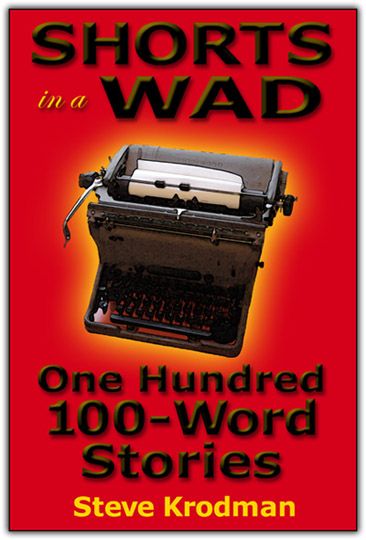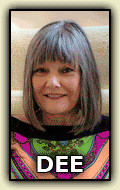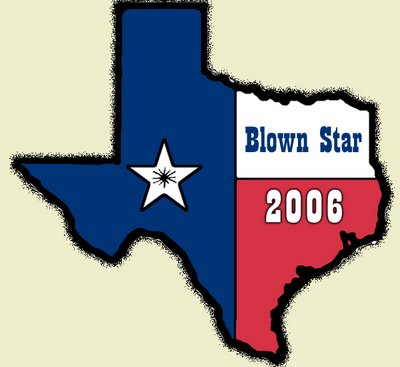By any other name would smell as sweet.”
- William Shakespeare, Romeo and Juliet (II, ii, 1-2)
“A rose by any other name would smell as sweet... but if you call a rose a turdblossom, I won’t be sniffing it anytime soon.”
- Elisson
“I say it’s spinach, and I say the hell with it.”
- E. B. White
The English language is a most adaptable construct, especially when it falls into the hands of people with an agenda. Selling an idea is easier when you can tailor words that enhance its appeal, and our tongue is nothing if not eminently tailorable.
Witness the recent attempt by the Prune Industry to give their product more sex appeal. Since many people (apparently) associate prunes with Old People - so the thinking goes - let’s call ’em something else. Let’s call ’em... Dried Plums!
It’s not dishonest, this nomenclatural hitchy-switchy. A prune is a dried plum, after all. And marketing-driven rebranding is nothing new. Once upon a time, people talked about garbage collectors and used cars; that was before “sanitation engineers” and “pre-owned vehicles” came along. (Is there any expression more pretentious than “pre-owned vehicle”?)
When people want to sell you something that isn’t really good for you, though - that’s when the serious rebranding guns are trotted out. Sugary cereals like Sugar Smacks and Sugar Pops get renamed: they’re now Honey Smacks and Corn Pops. Same shit, healthier-sounding names. Why call ’em Sugar Frosted Flakes when Frosted Flakes gets the point across - we know what the fuck they’re frosted with, just don’t rub it in, OK? These are the geniuses who would happily label a sack of sugar “A Low-Fat Food” if they could get away with it. Sure, it’s technically true, but still...
Enter the Corn Refiners Association, who announced today that they have petitioned the FDA to be allowed to call high fructose corn syrup (HFCS) “corn sugar” on food labels.
“Corn sugar” sounds a whole lot more innocuous than the scary, chemical-sounding high fructose corn syrup... not to mention the fact that it’s practically a homophone for ”cane sugar.” And innocuous is the impression the corn refiner boys want to leave you with.
It seems that HFCS has taken a bit of a beating lately, having been associated by some researchers with the mushrooming rate of obesity in the United States. The wholesale introduction of HFCS into the American food supply in the late 1970’s - a result of Nixon Administration changes to the federal corn subsidy program, coupled with tariffs on imported sugar that gave HFCS a significant cost advantage over non-corn-based sweeteners - coincides suspiciously with the onset of that selfsame obesity epidemic.
HFCS has roughly the same caloric value as sucrose - slightly less, in fact, if you factor in its moisture content. It’s a mixture of glucose and fructose, two simple sugars, with fructose accounting for 42% or 55% of the total. Sucrose (table sugar) consists of equal amounts of glucose and fructose; unlike in HFCS, however, the two simple sugars are linked together by a glycosidic bond.
Are sucrose and HFCS metabolized differently? The corn refiner cabal will deny it all day long, and the research on the matter is sketchy... but a recent Princeton University study showed that in rats, a diet that included HFCS resulted in significantly higher weight gain, even at the same level of caloric intake. There are many possible causes of this phenomenon, including differences in both eating behavior and metabolism as it relates to the two types of sweeteners, but metabolic chemistry may play a prominent role:
“The rats in the Princeton study became obese by drinking high-fructose corn syrup, but not by drinking sucrose. The critical differences in appetite, metabolism and gene expression that underlie this phenomenon are yet to be discovered, but may relate to the fact that excess fructose is being metabolized to produce fat, while glucose is largely being processed for energy or stored as a carbohydrate, called glycogen, in the liver and muscles.”The jury is still out, but I’ve seen enough evidence to convince me that HFCS is something to be avoided.
That’s problematic, of course, since processed foods in America pretty much all contain HFCS these days. Sugary soft drinks are not an issue; we don’t drink ’em here at Chez Elisson (or anywhere else)... but HFCS is in bread, ketchup, salad dressings, crackers, you name it. We have taken to reading ingredient labels carefully, and eliminating as much HFCS as possible from the fridge and pantry. Precisely what the Corn Boys don’t like.
“High fructose corn syrup is made from corn — a natural grain product. High fructose corn syrup contains no artificial or synthetic ingredients or color additives,” they say.
I’m no Mr. Natural, but when you take corn, mill it to make cornstarch, digest that starch to make glucose, and then enzymatically isomerize that glucose to make a blend of glucose and fructose, you’ve taken a natural product and, using an unnatural sequence of natural processes, created a product not seen in nature. Not that there’s anything wrong with that - I have no problem with Better Living Through Chemistry - but just don’t bullshit me. Look: Natural don’t mean squat. Shit and cancer are natural. But, Corn Boys, your trying to be disingenuous just pisses me off.
“Call it ‘corn sugar’ and everything will be OK,” they say.
Corn Sugar, my ass. I say it’s high fructose corn syrup... and I say the hell with it.




















5 comments:
They can call it what they want, but they had better make sure they leave the word "corn" on the label because if it's derived from corn, my gut won't tolerate it. This means no sodapop, no pudding (cornstarch!), very few soups and stews unless I make them myself, few pre-made spice mixes, no gummybears... there's corn in damn near everything these days, it seems like. Drives me nuts.
So, corn board, how about the following product containing "no artificial or synthetic ingredients or color additives." Want to feed that to the kiddies?
Heroin, or diacetylmorphine (INN), also known as diamorphine (BAN), is a semi-synthetic opioid drug synthesized from morphine, a derivative of the opium poppy. It is the 3,6-diacetyl ester of morphine (di (two)-acetyl-morphine). The white crystalline form is commonly the hydrochloride salt diacetylmorphine hydrochloride.
While we're at it, the hell with partially hydrogenated vegetable oil, enriched wheat flour, saccharine, and aspartame.
I recently watched the documentary Food, Inc. which is about our corporate food industry. I usually take documentaries with a grain or two of salt (sometimes I need the whole cellar!), but I found some of the info on Big Corn and the patented Monsanto Soy Bean interesting.
I have been reading labels for years. I will eat sugar - it doesn't cause issues for me. However, somewhere along the line some combination of additives and preservatives cause me migraines. Since I can't weed out the offending parties - I just dropped them all as much as possible.
My method - no additives or preservatives only real ingredients. BTW additives include "natural flavors" gotta love that catch phrase... I've never heard of a natural flavors plant or animal!
Once you know what you can and can't buy it gets easier. I stick with non-sauced food in restaurants as much as possible, etc, etc.
I can be done and oddly enough once you do this - then go back and eat something small like a Hershey kiss... it will taste terrible! Metallic! Not right!
@Teresa - Hershey's Kisses (and Hershey's milk chocolate in general) have a distinctly sour taste when you compare them to really good European milk chocolate. It's just the Hershey's "house style" - and in this country, we're so familiar with it, we don't notice it much.
Eliminating HFCS from my diet (and cutting way back on most sweeteners) has made my palate a lot more sensitive. Flavors are a lot more "tasty" - and I enjoy what I eat a whole lot more.
Post a Comment